Determination of Highly Transient Electric Field in Water Using the Kerr Effect with Picosecond Resolution
Abstract
:1. Introduction
2. Experimental Setup and Methods
2.1. Experimental Device and Electrical Measurements
2.2. Time-Resolved Interferometry
2.3. Evaluation
3. Results and Discussion
4. Conclusions
Author Contributions
Funding
Institutional Review Board Statement
Informed Consent Statement
Data Availability Statement
Conflicts of Interest
References
- Adamovich, I.; Agarwal, S.; Ahedo, E.; Alves, L.L.; Baalrud, S.; Babaeva, N.; Bogaerts, A.; Bourdon, A.; Bruggeman, P.J.; Canal, C.; et al. The 2022 Plasma Roadmap: Low temperature plasma science and technology. J. Phys. D Appl. Phys. 2022, 55, 373001. [Google Scholar] [CrossRef]
- Joshi, R.P.; Kolb, J.F.; Xiao, S.; Schoenbach, K.H. Aspects of Plasma in Water: Streamer Physics and Applications. Plasma Process. Polym. 2009, 6, 763–777. [Google Scholar] [CrossRef]
- Šimek, M.; Hoffer, P.; Tungli, J.; Prukner, V.; Schmidt, J.; Bílek, P.; Bonaventura, Z. Investigation of the initial phases of nanosecond discharges in liquid water. Plasma Sources Sci. Technol. 2020, 29, 064001. [Google Scholar] [CrossRef]
- Hoffer, P.; Prukner, V.; Schmidt, J.; Šimek, M. Shockwaves evolving on nanosecond timescales around individual micro-discharge filaments in deionised water. J. Phys. D Appl. Phys. 2021, 54, 285202. [Google Scholar] [CrossRef]
- Hoffer, P.; Bílek, P.; Prukner, V.; Bonaventura, Z.; Šimek, M. Dynamics of macro- and micro-bubbles induced by nanosecond discharge in liquid water. Plasma Sources Sci. Technol. 2022, 31, 015005. [Google Scholar] [CrossRef]
- Šimek, M.; Hoffer, P.; Prukner, V.; Schmidt, J. Disentangling dark and luminous phases of nanosecond discharges developing in liquid water. Plasma Sources Sci. Technol. 2020, 29, 095001. [Google Scholar] [CrossRef]
- Novac, B.M.; Banakhr, F.A.; Smith, I.R.; Pecastaing, L.; Ruscassie, R.; De Ferron, A.S.; Pignolet, P. Determination of the Kerr Constant of Water at 658 nm for Pulsed Intense Electric Fields. IEEE Trans. Plasma Sci. 2012, 40, 2480–2490. [Google Scholar] [CrossRef]
- Novac, B.M.; Ruscassie, R.; Wang, M.; De Ferron, A.S.; Pecastaing, L.; Smith, I.R.; Yin, J. Temperature Dependence of Kerr Constant for Water at 658 nm and for Pulsed Intense Electric Fields. IEEE Trans. Plasma Sci. 2016, 44, 963–967. [Google Scholar] [CrossRef]
- Minmitani, S.K.Y.; Minamitani, Y.; Kono, S.; Goan, B.; Kolb, J.; Xiao, S.; Bickes, C.; Lu, X.; Laroussi, M.; Joshi, R.; et al. Nanosecond interferometric measurements of the electric field distribution in pulse charged water gaps. In Proceedings of the Conference Record of the Twenty-Sixth International Power Modulator Symposium, 2004 and 2004 High-Voltage Workshop, San Francisco, CA, USA, 23–26 May 2004; IEEE: Piscataway, NJ, USA, 2004; pp. 516–519. [Google Scholar] [CrossRef]
- Zahn, M.; Takada, T. High voltage electric field and space-charge distributions in highly purified water. J. Appl. Phys. 1983, 54, 4762–4775. [Google Scholar] [CrossRef]
- Zahn, M.; Takada, T.; Voldman, S. Kerr electro-optic field mapping measurements in water using parallel cylindrical electrodes. J. Appl. Phys. 1983, 54, 4749–4761. [Google Scholar] [CrossRef]
- Sarkisov, G.S.; Zameroski, N.D.; Woodworth, J.R. Observation of electric field enhancement in a water streamer using Kerr effect. J. Appl. Phys. 2006, 99, 083304. [Google Scholar] [CrossRef]
- Nakamura, S.; Minamitani, Y.; Handa, T.; Katsuki, S.; Namihira, T.; Akiyama, H. Optical Measurements of the Electric Field of Pulsed Streamer Discharge in Water. In Proceedings of the 2008 IEEE International Power Modulators and High Voltage Conference (IPMC), Las Vegas, NV, USA, 27–31 May 2008; IEEE: Piscataway, NJ, USA, 2008; pp. 312–315. [Google Scholar] [CrossRef]
- Yassinskiy, V.B.; Kuznetsova, Y.A.; Korobeynikov, S.M.; Vagin, D.V. Simulation of Electrooptical Measurements of Prebreakdown Electric Fields in Water—Part I: Electric Field Near Anode Streamer. IEEE Trans. Plasma Sci. 2022, 50, 1262–1268. [Google Scholar] [CrossRef]
- Yassinskiy, V.B.; Kuznetsova, Y.A.; Korobeynikov, S.M.; Vagin, D.V.; Ridel, A.V. Simulation of Electrooptical Measurements of Prebreakdown Electric Fields in Polar Liquids Near Cathode Streamer. IEEE Trans. Plasma Sci. 2023, 51, 3103–3110. [Google Scholar] [CrossRef]
- Ihori, H.; Nakao, H.; Fujii, M. Time Series Measurement of Electric Field and Electrical Space Charge Distributions in a Dielectric Liquid. Jpn. J. Appl. Phys. 2012, 51, 080204. [Google Scholar] [CrossRef]
- Shi, J.; Yang, Q.; Sima, W.; Liao, L.; Huang, S.; Zahn, M. Space charge dynamics investigation based on Kerr electro-optic measurements and processing of CCD images. IEEE Trans. Dielectr. Electr. Insul. 2013, 20, 601–611. [Google Scholar] [CrossRef]
- Prukner, V.; Schmidt, J.; Hoffer, P.; Šimek, M. Demonstration of Dynamics of Nanosecond Discharge in Liquid Water Using Four-Channel Time-Resolved ICCD Microscopy. Plasma 2021, 4, 183–200. [Google Scholar] [CrossRef]
- Hebner, R.E.; Sojka, R.J.; Cassidy, E.C. Kerr Coefficients of Nitrobenzene and Water; National Bureau of Standards: Washington, DC, USA, 1974. [Google Scholar] [CrossRef]
- Orttung, W.H.; Mayers, J.A. The Kerr Constant of Water. J. Phys. Chem. 1963, 67, 1905–1910. [Google Scholar] [CrossRef]
- Danielewicz-Ferchmin, I.; Ferchmin, A.R. Static permittivity of water revisited: ε in the electric field above 108V m−1and in the temperature range 273 ≤ T ≤ 373 K. Phys. Chem. Chem. Phys. 2004, 6, 1332–1339. [Google Scholar] [CrossRef]
- Boyd, R.W. Nonlinear Optics; Elsevier Science: San Diego, CA, USA, 2003. [Google Scholar]
- Rottwitt, K.; Tidemand-Lichtenberg, P. Nonlinear Optics; Taylor & Francis Group: Boca Raton, FL, USA, 2015. [Google Scholar]
- Buchner, R.; Barthel, J.; Stauber, J. The dielectric relaxation of water between 0 °C and 35 °C. Chem. Phys. Lett. 1999, 306, 57–63. [Google Scholar] [CrossRef]
- Carlson, B.E.; Inan, U.S. A novel technique for remote sensing of thunderstorm electric fields via the Kerr effect and sky polarization. Geophys. Res. Lett. 2008, 35, L22806. [Google Scholar] [CrossRef]
- Pavliček, P.; Michálek, V. White-light interferometry—Envelope detection by Hilbert transform and influence of noise. Opt. Lasers Eng. 2012, 50, 1063–1068. [Google Scholar] [CrossRef]
- Onodera, R.; Watanabe, H.; Ishii, Y. Interferometric Phase-Measurement Using a One-Dimensional Discrete Hilbert Transform. Opt. Rev. 2005, 12, 29–36. [Google Scholar] [CrossRef]
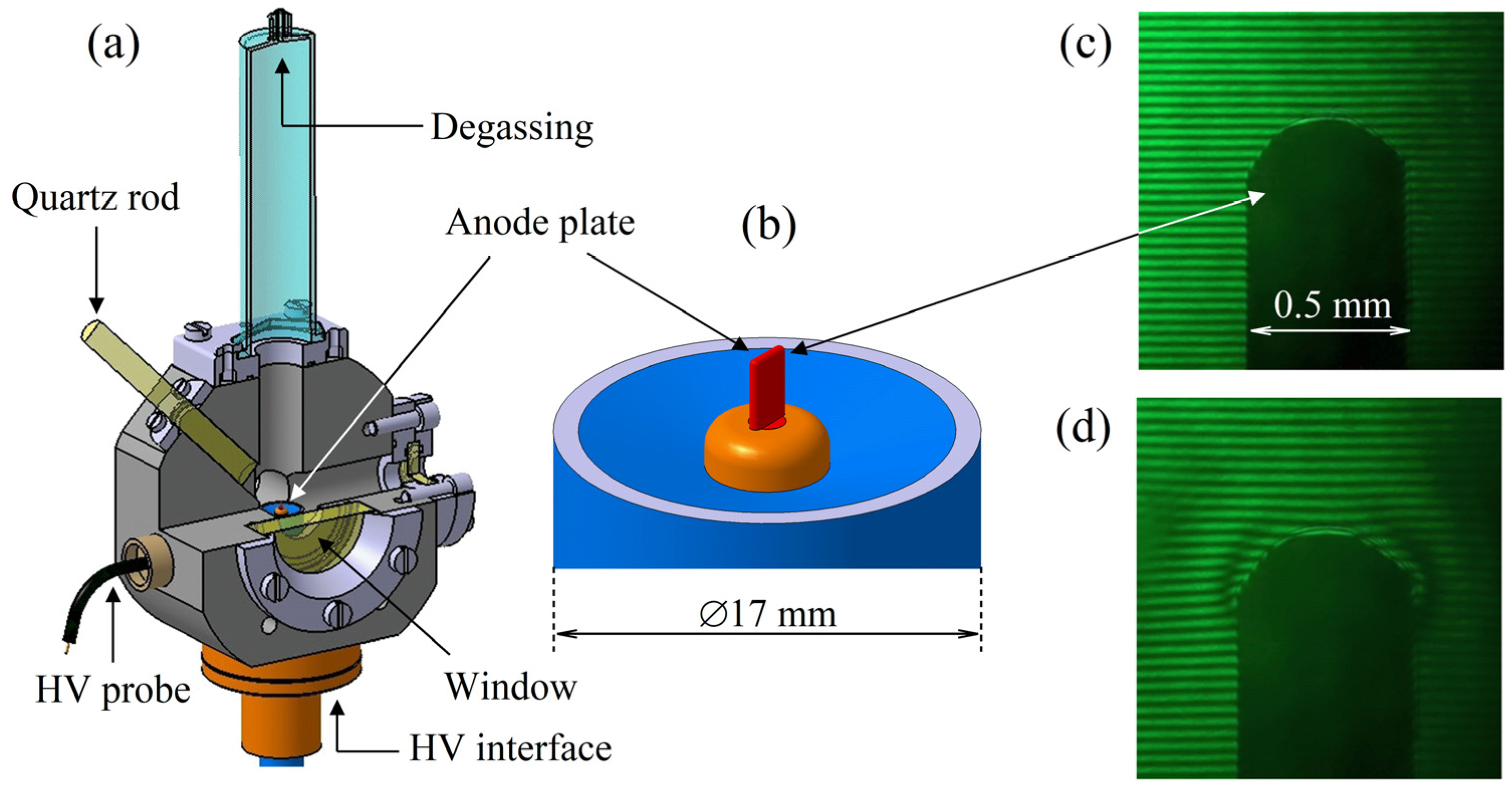

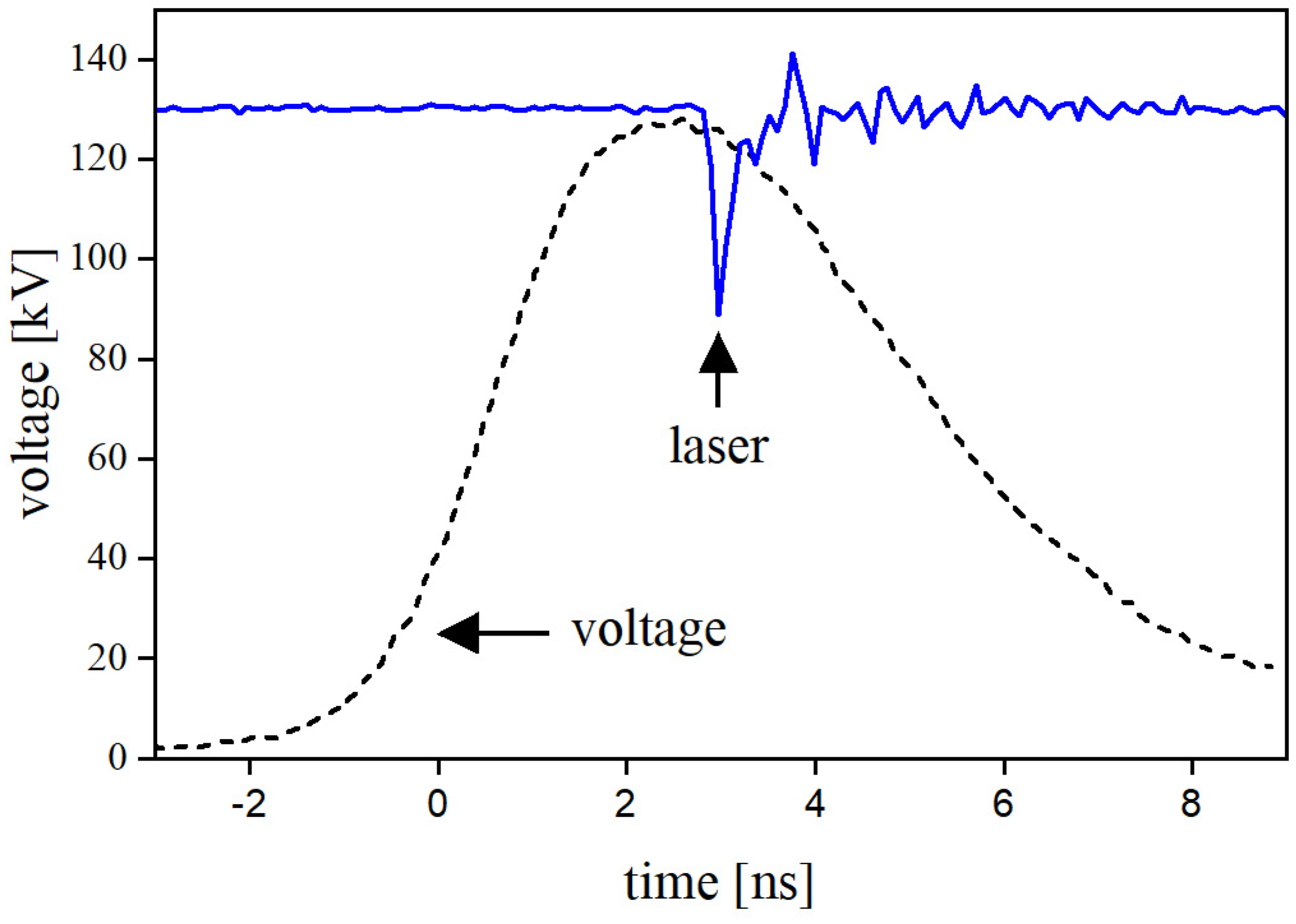

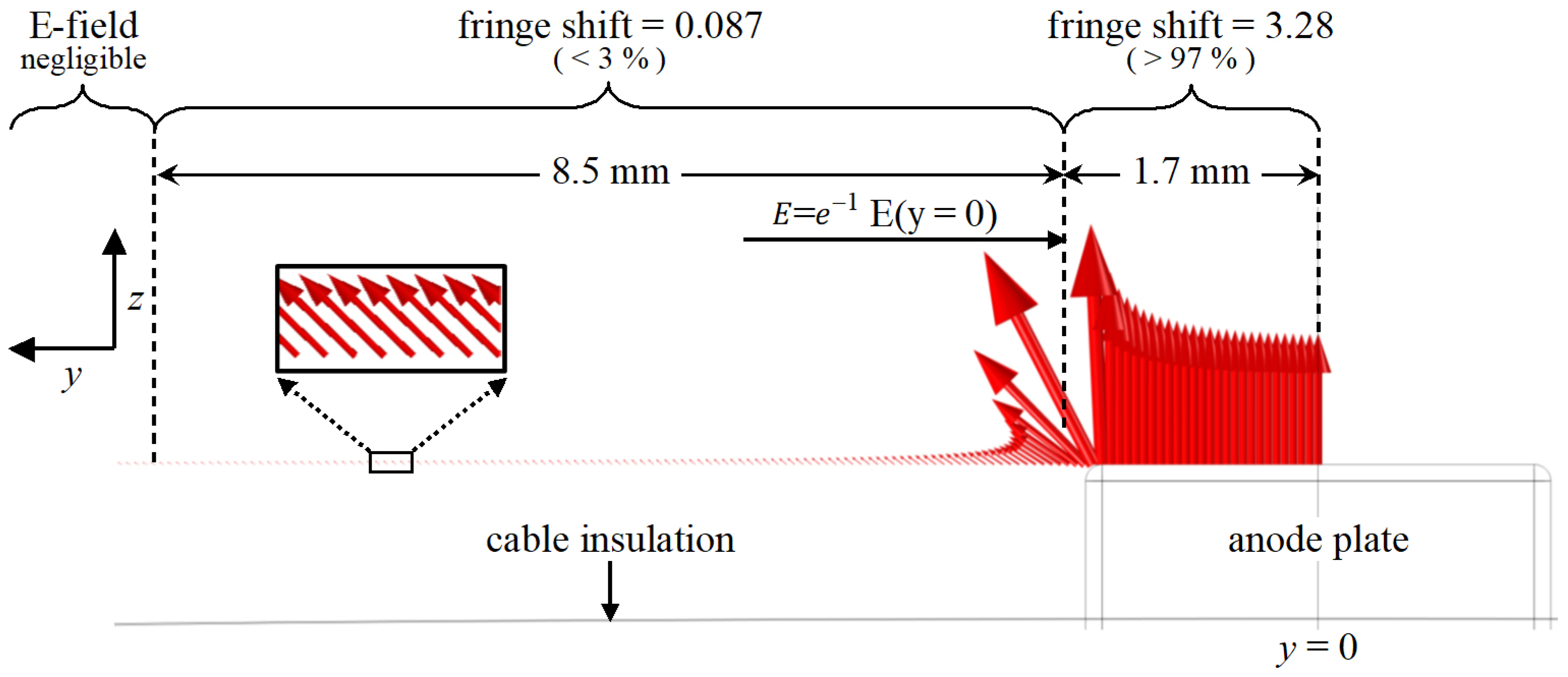


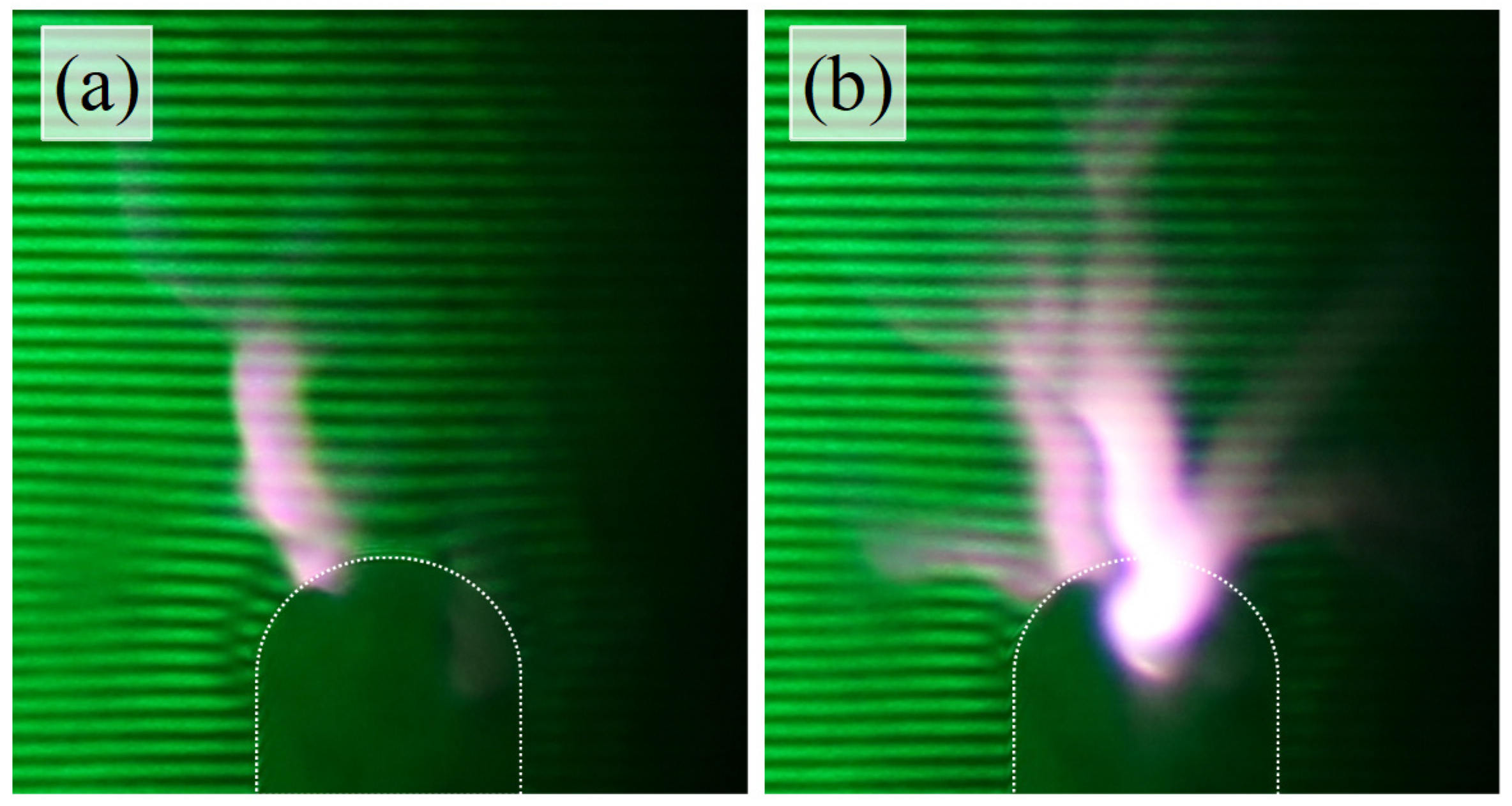
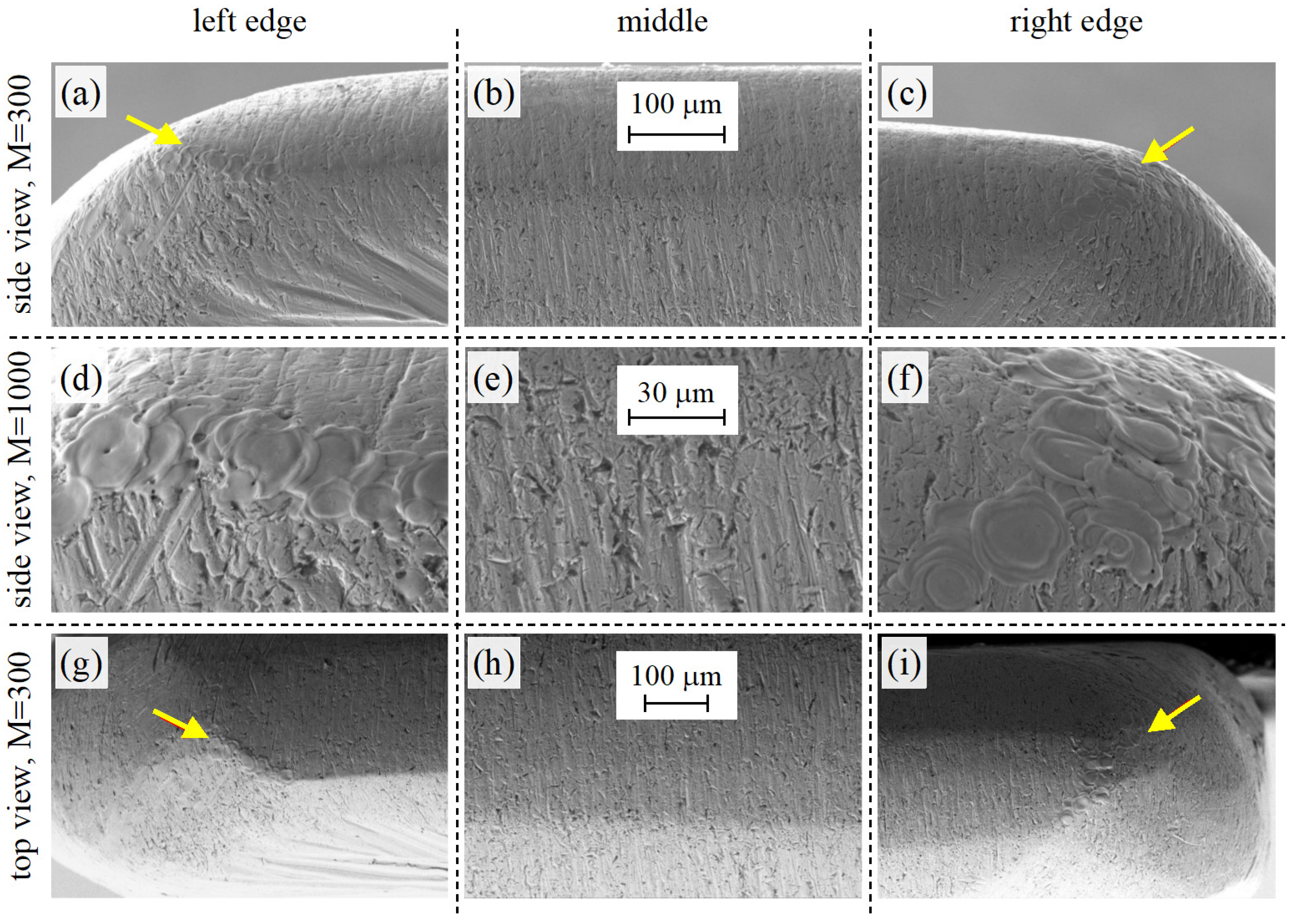
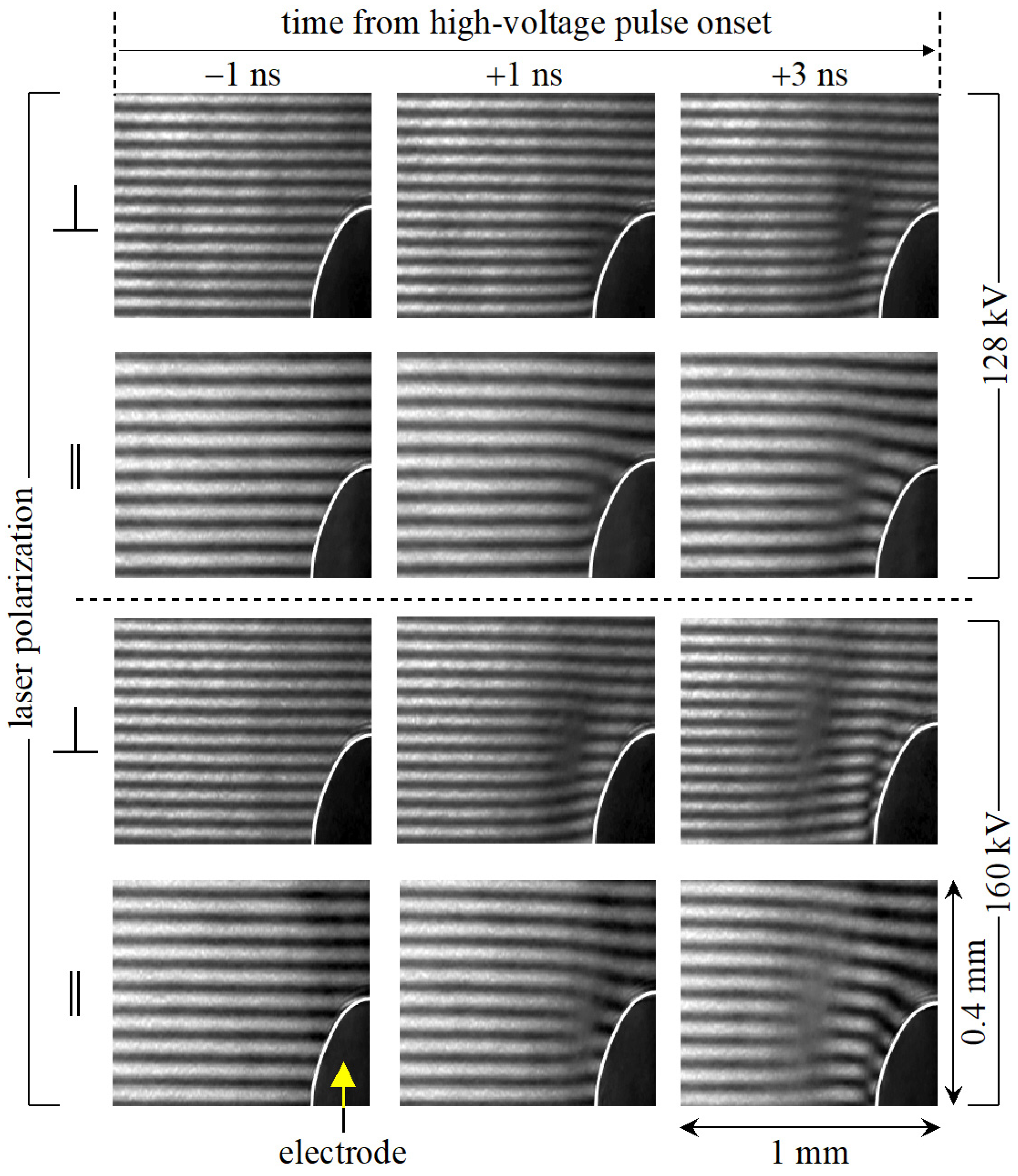


Disclaimer/Publisher’s Note: The statements, opinions and data contained in all publications are solely those of the individual author(s) and contributor(s) and not of MDPI and/or the editor(s). MDPI and/or the editor(s) disclaim responsibility for any injury to people or property resulting from any ideas, methods, instructions or products referred to in the content. |
© 2024 by the authors. Licensee MDPI, Basel, Switzerland. This article is an open access article distributed under the terms and conditions of the Creative Commons Attribution (CC BY) license (https://creativecommons.org/licenses/by/4.0/).
Share and Cite
Hoffer, P.; Prukner, V.; Arora, G.; Mušálek, R.; Šimek, M. Determination of Highly Transient Electric Field in Water Using the Kerr Effect with Picosecond Resolution. Plasma 2024, 7, 316-328. https://doi.org/10.3390/plasma7020018
Hoffer P, Prukner V, Arora G, Mušálek R, Šimek M. Determination of Highly Transient Electric Field in Water Using the Kerr Effect with Picosecond Resolution. Plasma. 2024; 7(2):316-328. https://doi.org/10.3390/plasma7020018
Chicago/Turabian StyleHoffer, Petr, Václav Prukner, Garima Arora, Radek Mušálek, and Milan Šimek. 2024. "Determination of Highly Transient Electric Field in Water Using the Kerr Effect with Picosecond Resolution" Plasma 7, no. 2: 316-328. https://doi.org/10.3390/plasma7020018





